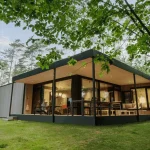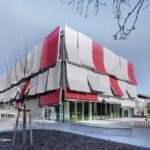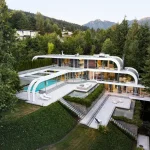Bauhaus Centenary 2019 News, Modern German Building, 20th Century Architecture
Bauhaus Centenary 2019
Modern German Building – birthplace of ‘Neues Bauen’ – ‘New Objectivity’ – 20C Functional Design
27 + 15 Mar 2019
Location: Dokumentationszentrum Alltagskultur der DDR, Eisenhüttenstadt, Brandenburg, Eastern Germany
Bauhaus Exhibition in Eisenhüttenstadt, Brandenburg
A special exhibition celebrating the Bauhaus centenary in 2019:
“shaping everyday life! bauhaus modernism in the GDR”
Exhibition dates: 9th April 2019 to 5th January 2020
Opening: Sunday, April 7, 2019 at 2 p.m.
Venue:
Documentation Centre of Everyday Culture of the GDR
Erich-Weinert-Allee 3
15890 Eisenhuettenstadt
Contact: [email protected]
Bauhaus Dessau building, Germany:
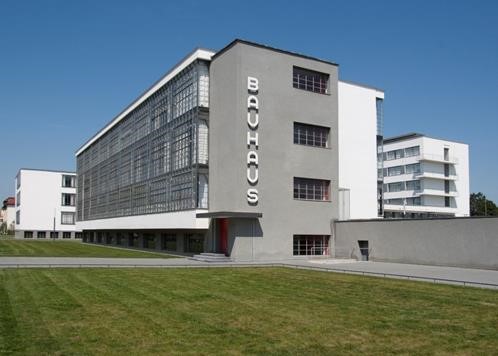
photo © Bauhaus Dessau Foundation, photo © Yvonne Tenschert
Bauhaus Centenary in 2019
As part of the Bauhaus centenary in 2019, the Documentation Centre of Everyday Culture of the GDR in Eisenhüttenstadt in the state of Brandenburg is presenting a special exhibition entitled “Shaping everyday life! – Bauhaus Modernism in the GDR” which examines the reception of the Bauhaus in the GDR. The exhibition opens on 7th April 2019.
Ausstellungsplakat der Kunstsammlungen Weimar, Entwurf: Liebig, 1968/1975
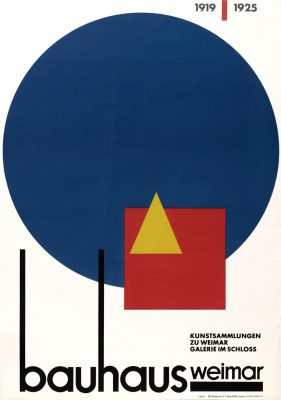
fotograf : Armin Herrmann für Dokumentationszentrum Alltagskultur der DDR
Functional, durable and optimized for industrial mass production: “Shaping everyday life !” presents objects that were part of everyday life in the GDR – furniture, glassware, ceramics, technology and graphic design – and biographies of the designers who followed the tradition of the Bauhaus and contributed to the continuing development of its design principles and modern product design.
Bowlensatz „Romanze“, Entwurf: Friedrich Bundtzen, 1962; Hersteller: VEB Oberlausitzer Glaswerke Weißwasser:
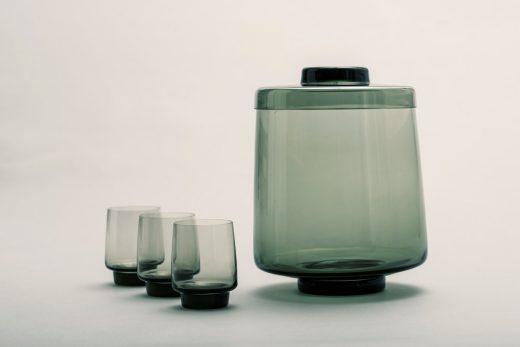
fotograf : Armin Herrmann für Dokumentationszentrum Alltagskultur der DDR
For example, the exhibition spotlights the design of furniture by the Deutsche Werkstätten Hellerau by displaying work by furniture designers Franz Ehrlich, Selman Selmanagić and Rudolf Horn. The furniture factory had become well known for its innovative products as early as the beginning of the 20th century.
Briefmarkensatz „Bauhaus“, Gestalter: Lothar Grünwald, 1980:
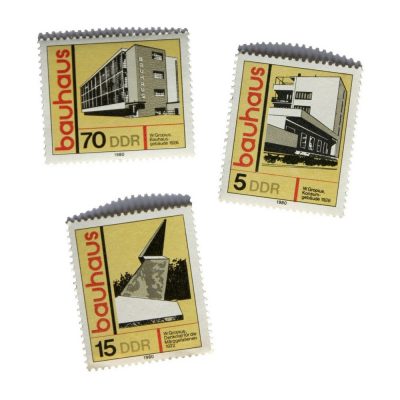
fotograf : Armin Herrmann für Dokumentationszentrum Alltagskultur der DDR
The impact of modern and functional design, for example of designs by Wilhelm Wagenfeld, on the glassware and ceramics created by Friedrich Bundtzen, Erich Müller, Margarete Jahny, Ilse Decho and Christa Petroff-Bohne is also explored.
Bauhaus Building by architect Walter Gropius in Dessau, Germany:
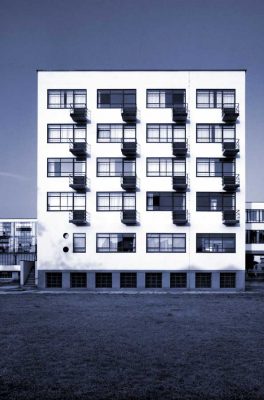
picture © Gordon Watkinson
The exhibition shows how designers such as Albert Krause applied the principle of functional, durable and practical design to new materials such as plastics. In addition, the concept of “living functionality” was further developed to achieve greater flexibility and user-friendliness, as seen in approaches such as the “open principle” demonstrated by the Mokick Simson S 50 moped designed by Karl Clauss Dietel and Lutz Rudolph, for example.
Form+Zweck, Fachzeitschrift für industrielle Formgestaltung, Jg. 1983, Heft 5 (Hrsg.: Amt für Industrielle Formgestaltung); Titelentwurf: Lothar Schelhorn:
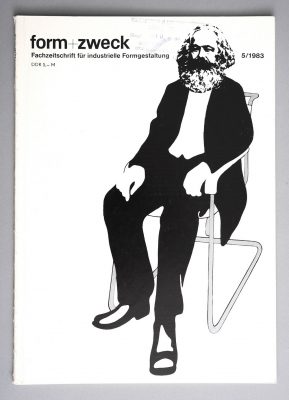
fotograf : Armin Herrmann für Dokumentationszentrum Alltagskultur der DDR
The exhibition has been organized in collaboration with the Visual Communication Department of weißensee kunsthochschule berlin (Weissensee Academy of Art, Berlin). Also in collaboration with the Deutsches Rundfunkarchiv (German Radio and Television Archive) and with the support of the Werkbundarchiv – Museum der Dinge (Werkbund Archive – Museum of Things), the Stiftung Industrie- und Alltagskultur (Foundation for Industrial and Everyday Culture), the Stiftung Plakat OST (Foundation for East-German Poster Art) and other private and institutional lenders.
Kaffeekännchen aus der Gastronomieserie „Rationell“, 1970; Entwurf: Margarete Jahny, Erich Müller, 1970, Hersteller: VEB Porzellankombinat Colditz:
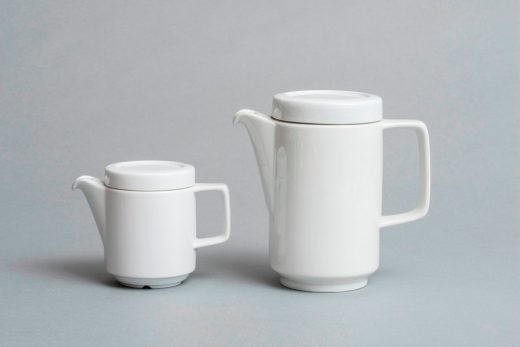
fotograf : Armin Herrmann für Dokumentationszentrum Alltagskultur der DDR
The “Shaping everyday life! – Bauhaus Modernism in the GDR” exhibition is a project sponsored by the Bundesstiftung zur Aufarbeitung der SED-Diktatur (Federal Foundation for the Study of the Communist Dictatorship in East Germany).
Polstersessel Modell 53693, Entwurf: Selman Selmanagic, 1957; Hersteller: VEB Deutsche Werkstätten Hellerau:
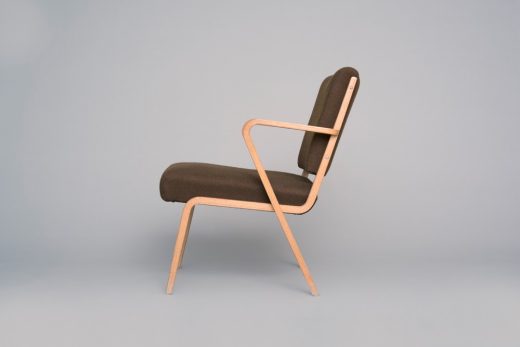
fotograf : Armin Herrmann für Dokumentationszentrum Alltagskultur der DDR
Media partner: Das Magazin
The catalogue is supported by Sparkasse Oder-Spree. The Dokumentationszentrum Alltagskultur der DDR (Documentation Centre of Everyday Culture of the GDR) is a public institution operated by Landkreis Oder-Spree (Oder-Spree County) and is sponsored by the State of Brandenburg.
Entwurf: Paul Bittner, Fritz Keuchel, Tilo Poitz, 1980; Produktion: VEB Sachsenglas Schwepnitz (Entwurf basierend auf den Wirtegläsern von Margarete Jahny, Erich Müller, 1970):
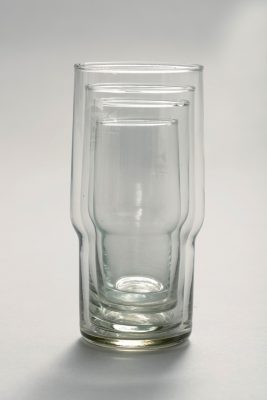
fotograf : Armin Herrmann für Dokumentationszentrum Alltagskultur der DDR
The exhibition also examines the contradictions in the GDR government’s approach to the Bauhaus heritage in its cultural policies. Initial attempts to revive the Bauhaus tradition were followed by campaigns against so-called “formalism”, a ban on Bauhaus- style design and a return to what were regarded as national traditions in design.
Modernism was tentatively rehabilitated when housing began to be constructed on an industrial scale. It was not until the refurbished Bauhaus Dessau was reopened in 1976 that the former school of design was adopted as part of the official cultural heritage of the GDR.
Teeservice 5000, Entwurf: Ilse Decho, 1962; Hersteller: VEB Jenaer Glaswerk Schott & Gen., Jena:
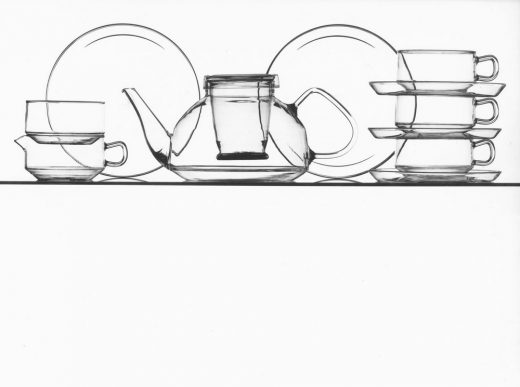
fotograf: Erich Müller, um 1963
Shaping everyday life! explores how the Bauhaus heritage gradually became accepted in the GDR. It considers early publications and exhibitions in the 1960s as well as later exhibitions, including the exhibition entitled “The Bauhaus Experiment” which was held in Dessau in 1988 in collaboration with the Bauhaus Archive in West Berlin. Exhibitions such as these were used to promote the GDR’s cultural and political image.
Portionsschalen in Meladur, Entwurf: Albert Krause, 1959; Hersteller: VEB Preßwerk Auma:
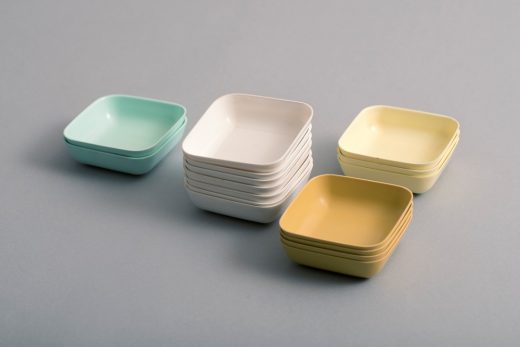
fotograf : Armin Herrmann für Dokumentationszentrum Alltagskultur der DDR
Notwithstanding the chequered history of the reception of the Bauhaus, particularly during the years of the Soviet Occupation Zone and the early years of the GDR, former Bauhaus designers such as Mart Stam and Walter Funkat inspired the next generation of designers by their design practice and teaching at East German universities. The graduates of those universities would in turn have a profound impact on everyday culture. The biographies of 50 Bauhaus designers presented at the exhibition also illustrate personal continuities and networks.
The exhibition „Shaping everyday life!“ invites visitors to discover a hitherto long-neglected chapter in German design history as part of the Bauhaus centenary in 2019.
Yet there is more than one reason why a visit to Eisenhüttenstadt is well worthwhile. In addition to the exhibition “Shaping everyday life”, the new city built in 1950 is an attractive destination. Just a short walk through the city reveals the changing East German ideals in architecture and town planning which are visible here more than anywhere else. Eisenhüttenstadt is not only one of Germany’s most extensive heritage sites but also one of the 100 selected destinations on the Modernism Grand Tour that can be visited during the Bauhaus centenary.
An exhibition catalogue, also entitled “Shaping everyday life! – Bauhaus Modernism in the GDR”, is available from Weimarer Verlag mbooks. www.m-books.eu
Dokumentationszentrum Alltagskultur der DDR (Documentation Centre of Everyday Culture of the GDR) Erich-Weinert-Allee 3 15890 Eisenhüttenstadt
Tel.: 03364 – 41 73 55
[email protected] www.alltagskultur-ddr.de
Opening hours Tuesday to Sunday and public holidays: 10 a.m. – 6 p.m. from October: 11 a.m. – 5 p.m.
How to reach the Documentation Centre: By train: trains run once an hour from Berlin (RE1/RE11) or Cottbus (RE11); take the no. 454 bus from the station (or the no. 453 bus from Glashüttenstraße on weekdays) to the “Rathaus” (town hall) stop. The Documentation Centre is a 5-minute walk from the bus stop. By car from the Berliner Ring, A 12, take the Frankfurt (Oder)-Mitte exit, then follow the B112 to Eisenhüttenstadt / Guben. In town follow the tourist signs.
Bauhaus Centenary 2019 Germany images / information received 140319
Bauhaus School Building in Dessau, Germany
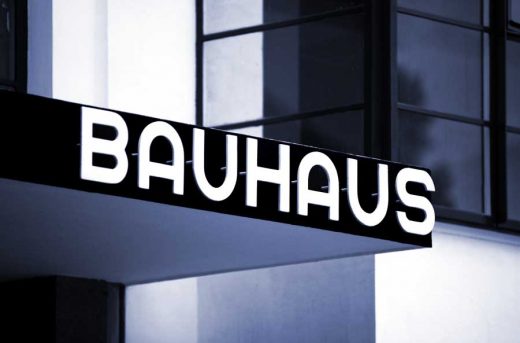
picture © Gordon Watkinson
Location: Eisenhüttenstadt, Brandenburg, Germany
Bauhaus Architecture
Bauhaus Architecture – selection on e-architect
Bauhaus architecture in Celle, Lower Saxony, Germany
Designs: Otto Haesler – German Modernism
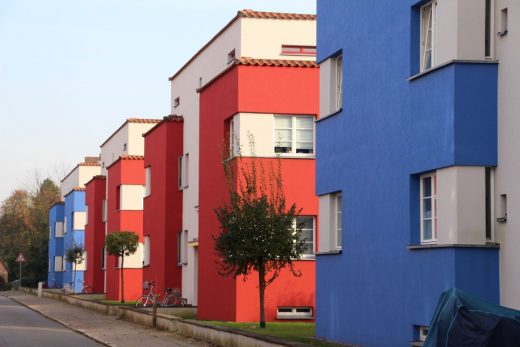
photo © CTM GmbH
Bauhaus Architecture in Celle
The Bauhaus Promenade Museum, Dessau, Germany
Design: Matteo Cainer Architects
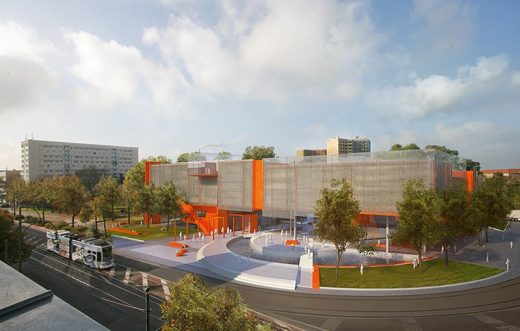
image from architect
The Bauhaus Promenade Museum
bauhouse 24H Competition, Dessau, Germany
1st prize: Sonya Falkovskaia
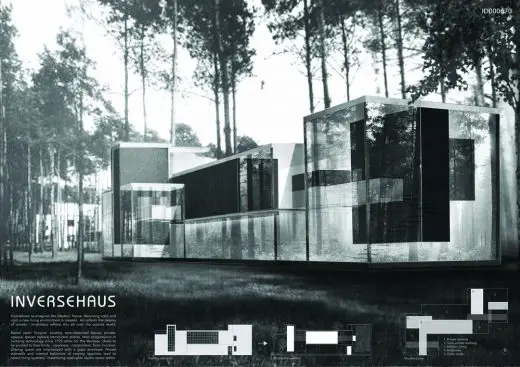
image courtesy of designer / 24h
bauhouse Competition
Villa Harnischmacher II, Germany
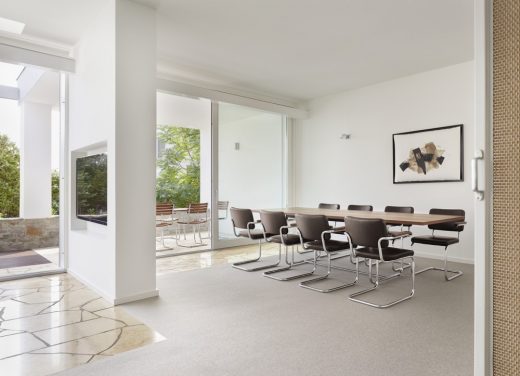
image courtesy of architects
Villa Harnischmacher II
An iconic Bauhaus villa in Wiesbaden’s city centre by architect Marcel Breuer in 1954.
Haus am Horn – The World’s First Bauhaus Building, Germany
Design: Georg Muche & Bauhaus students
Haus am Horn in Weimar Germany
Bauhaus Archiv Berlin Museum of Design, Germany
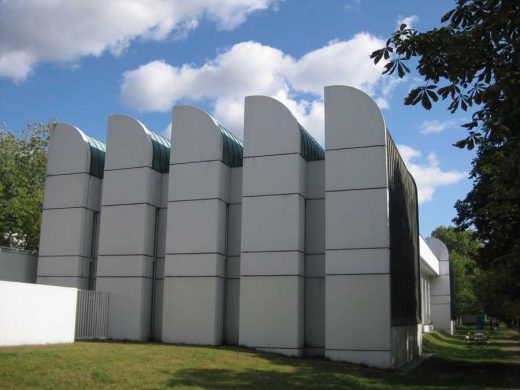
photo © Adrian Welch
Gropius in Chicago Coalition Protest, USA – Michael Reese Hospital Laundry building:
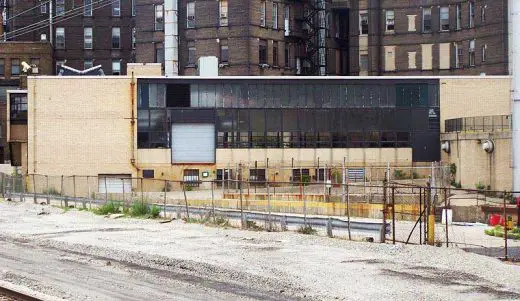
photo © Grahm M. Balkany / Gropius in Chicago Coalition
Bauhaus Museum Dessau Competition, Germany
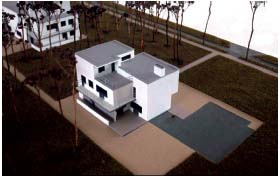
image from Bauhaus Building Competition organisers
Bauhaus in America Exhibition and Conference
Hazel Larsen Archer, Buckminster Fuller’s 1949 Dome at Black Mountain College, Summer 1949, gelatin silver prints, 13.75 x 21 inches (overall), 3.875 x 3.875 inches (ea):
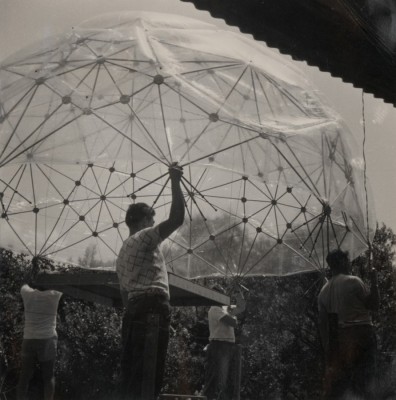
photograph © Estate of Hazel Larsen Archer
Bauhaus Masterhouses Dessau, Germany
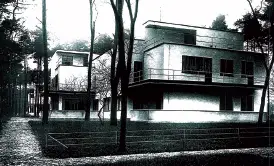
image from architects
Architecture in Germany
German Architectural Projects
German Architecture Designs – chronological list
Walter Gropius : Bauhaus Building architect
Comments / photos for the Bauhaus Centenary 2019, Germany page welcome

